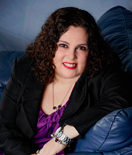First BanCorp announces 1-for-15 reverse stock split

 First BanCorp, parent company of First Bank, announced Wednesday that, effective Jan. 7, it will implement a 1-for-15 reverse stock split of all outstanding shares of its common stock as it pulls at its options to remain listed on the New York Stock Exchange.
First BanCorp, parent company of First Bank, announced Wednesday that, effective Jan. 7, it will implement a 1-for-15 reverse stock split of all outstanding shares of its common stock as it pulls at its options to remain listed on the New York Stock Exchange.Through the transaction, First BanCorp will reduce the number of outstanding shares of common stock from approximately 320 million to some 21 million. It is expected that by having fewer stock available, the value of First BanCorp’s shares — which closed at .49 cents on Wednesday — will increase. The bank has been struggling to regain its financial footing for the better part of the last year.
“We appreciate the support of our stockholders in granting our board the authority to effect a reverse stock split. After a thorough consideration of our options, the board determined that a reverse stock split of the Corporation’s common shares is in the best interest of stockholders,” said First BanCorp President Aurelio Alemán. “A reverse stock split better positions the Corporation to accomplish its capital strategies and regain compliance with the NYSE listing rules.”
Wednesday’s announcement is the latest in a string of moves that First BanCorp has been implementing recently to improve its assets.
Last month, the bank said it intended to sell $701.9 million in bad loans at a sharp discount, for which it expected to receive $401.9 million, or 57.5 percent of the value of the portfolio.
Author Details
Author Details
Business reporter with 30 years of experience writing for weekly and daily newspapers, as well as trade publications in Puerto Rico. My list of former employers includes Caribbean Business, The San Juan Star, and the Puerto Rico Daily Sun, among others. My areas of expertise include telecommunications, technology, retail, agriculture, tourism, banking and most other segments of Puerto Rico’s economy.












